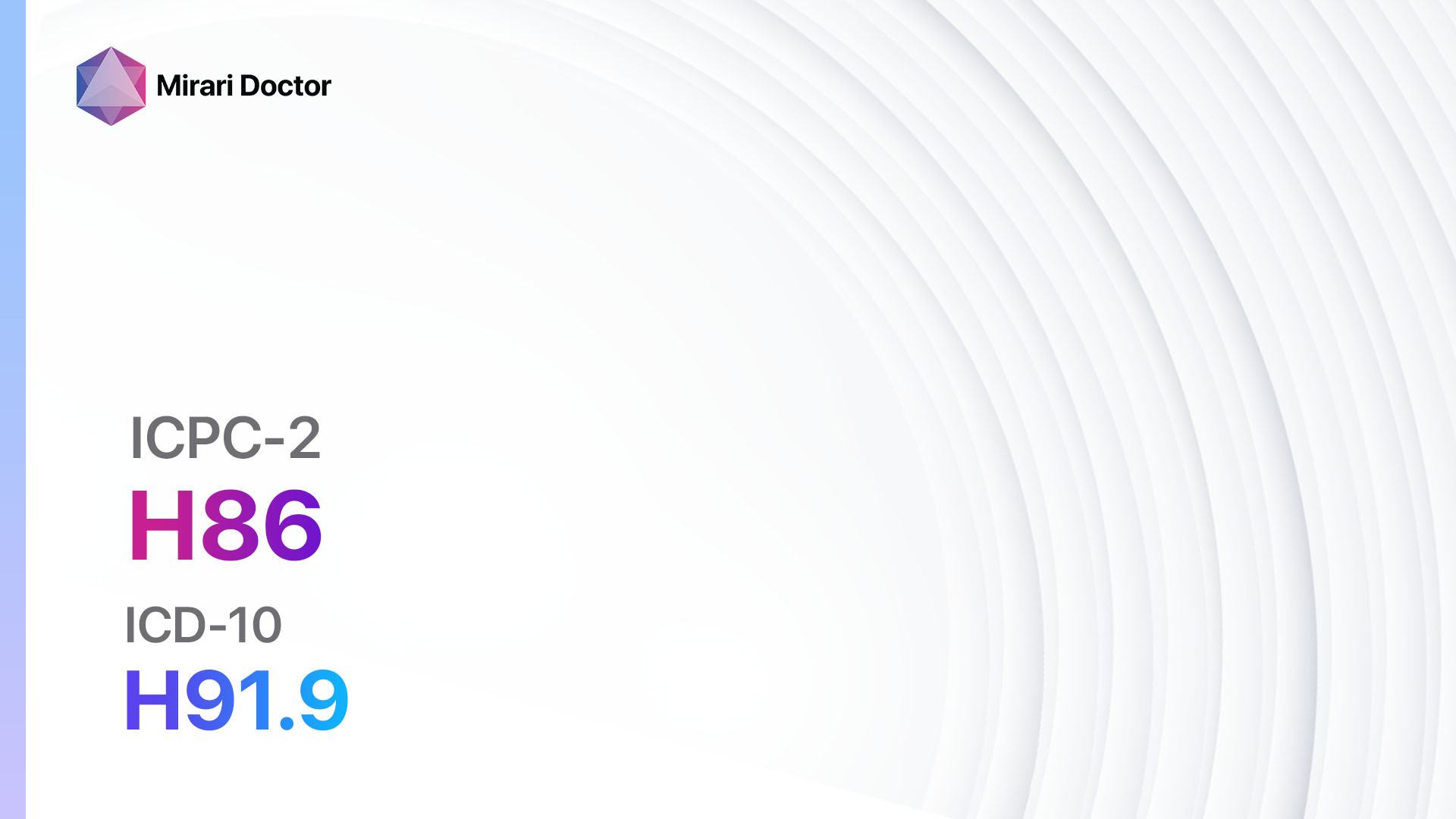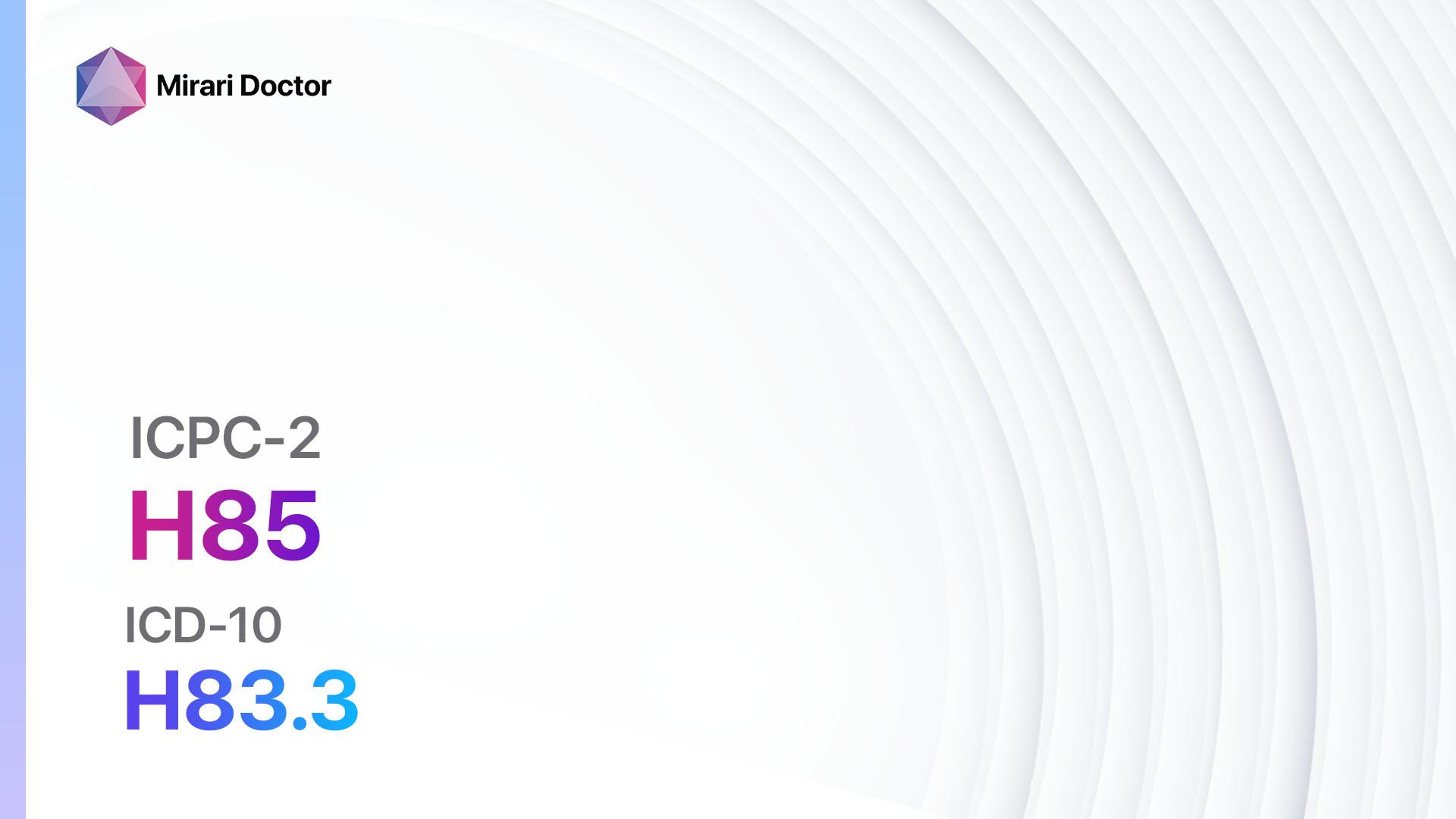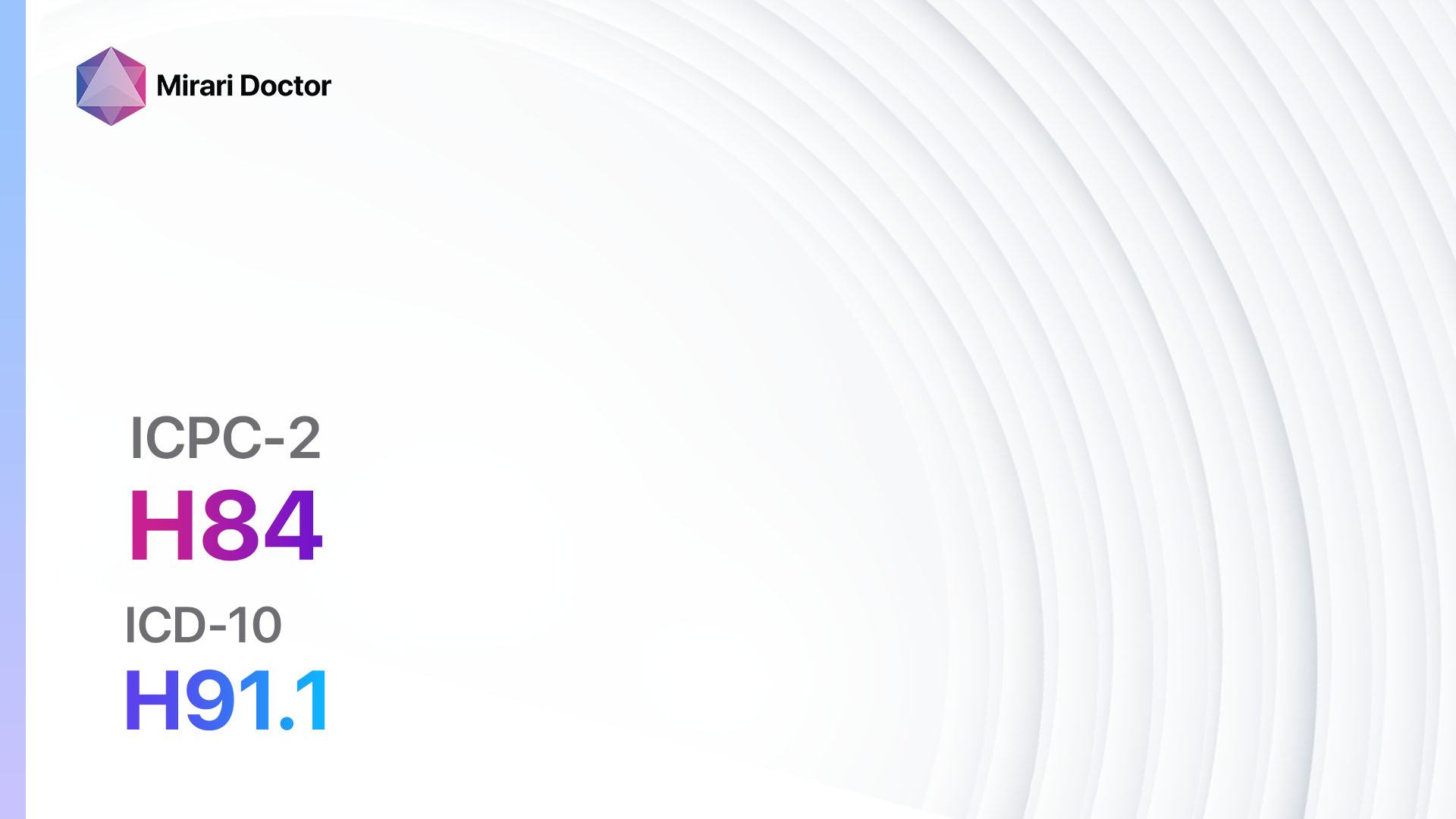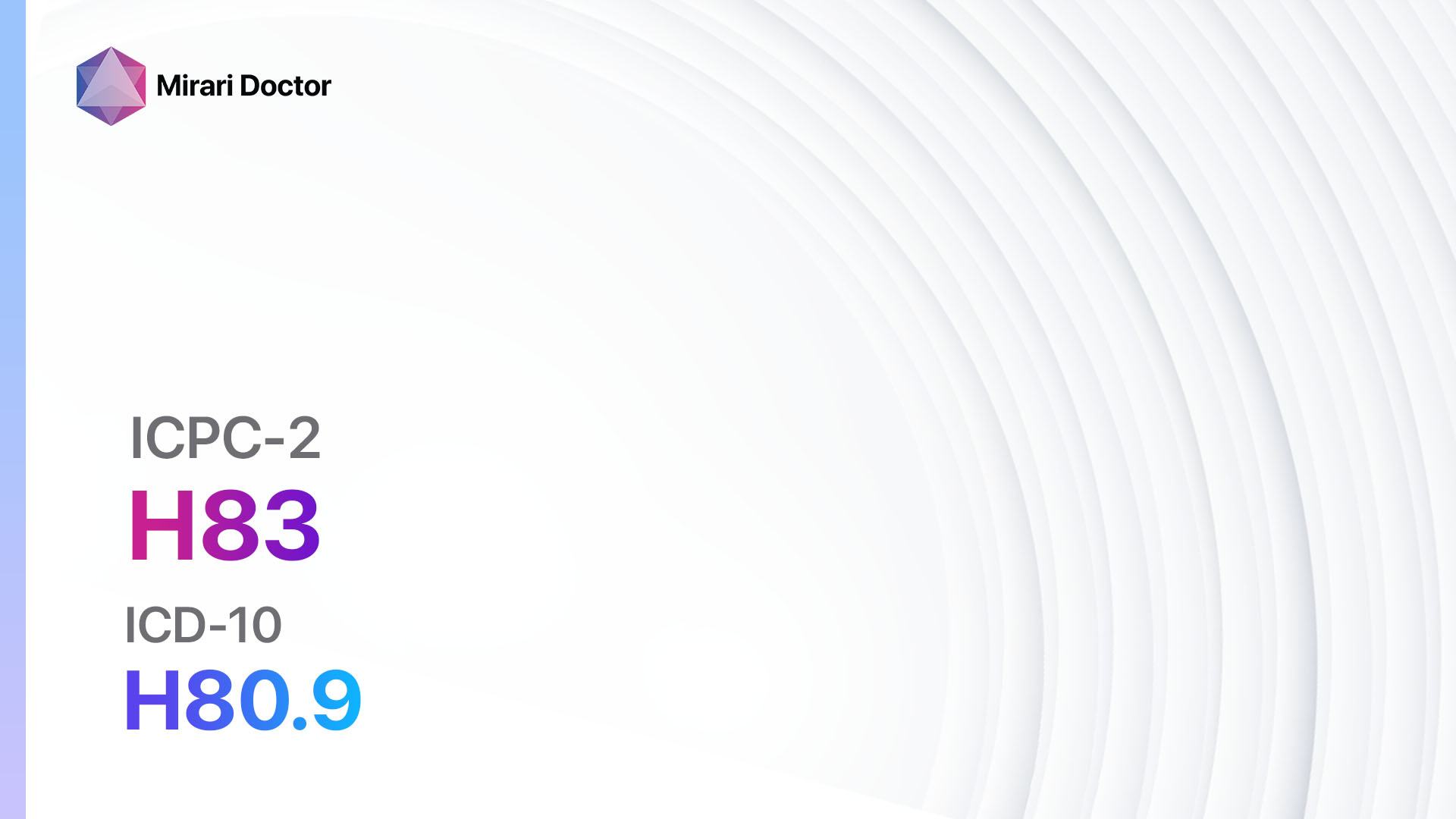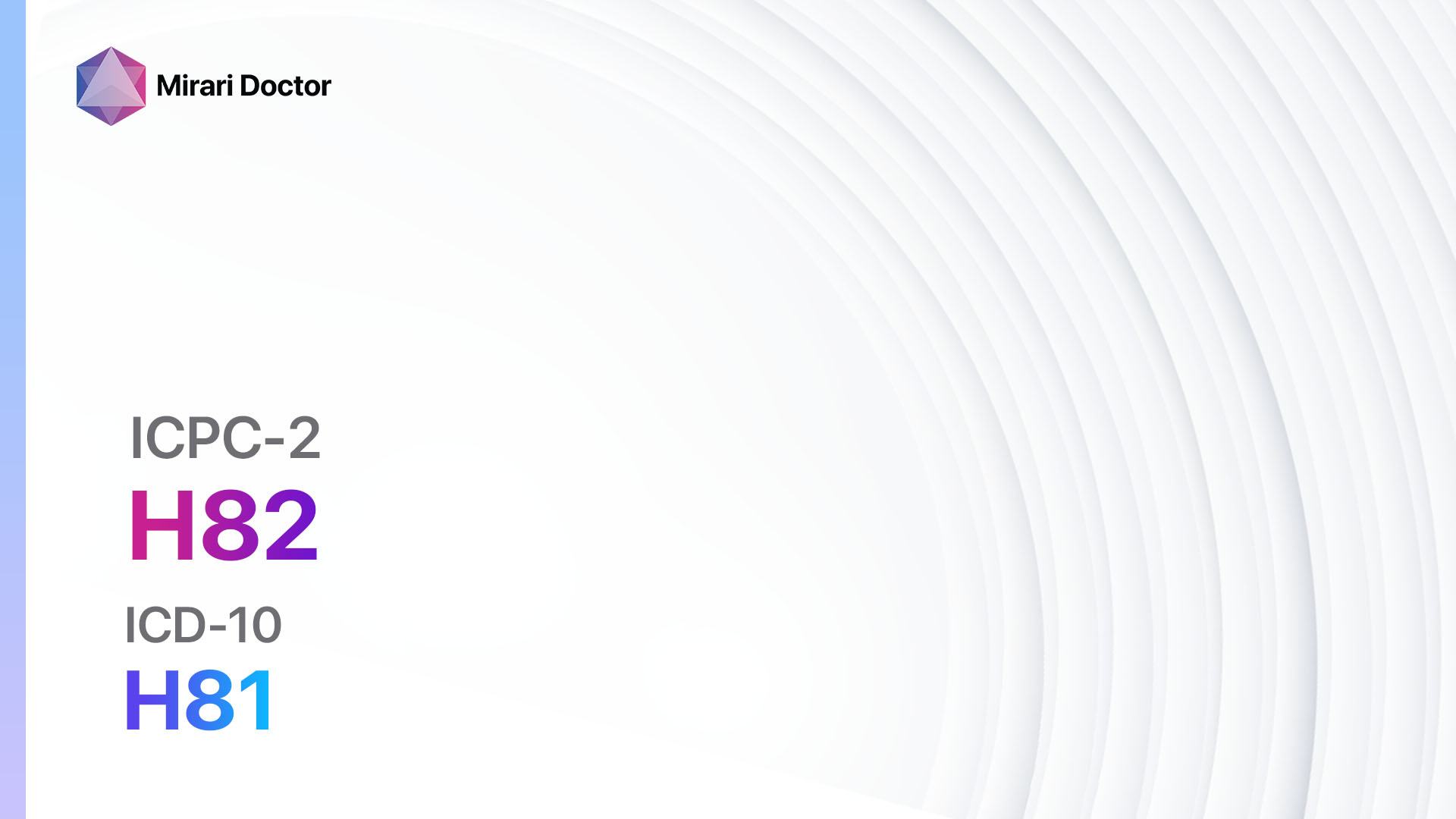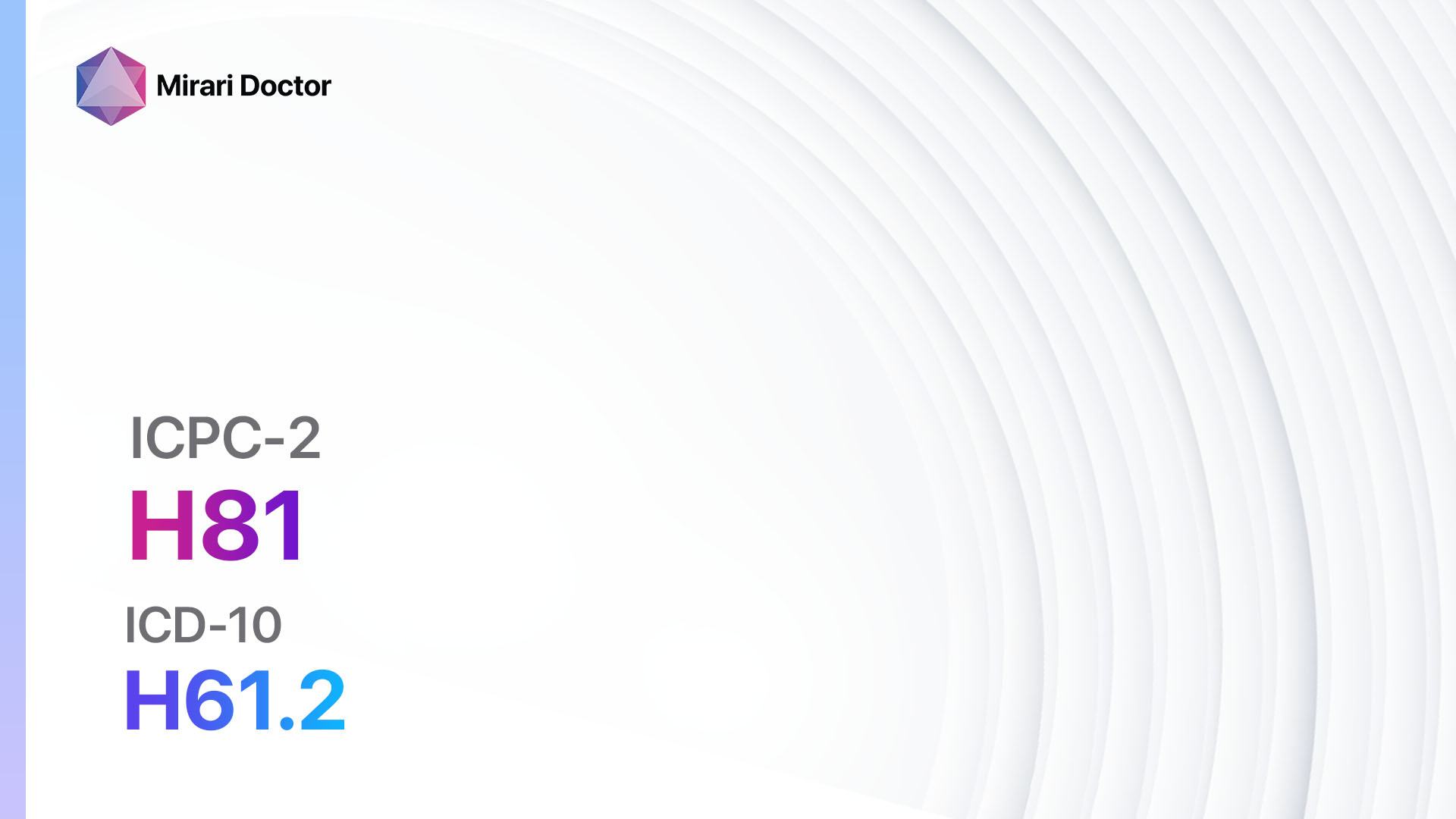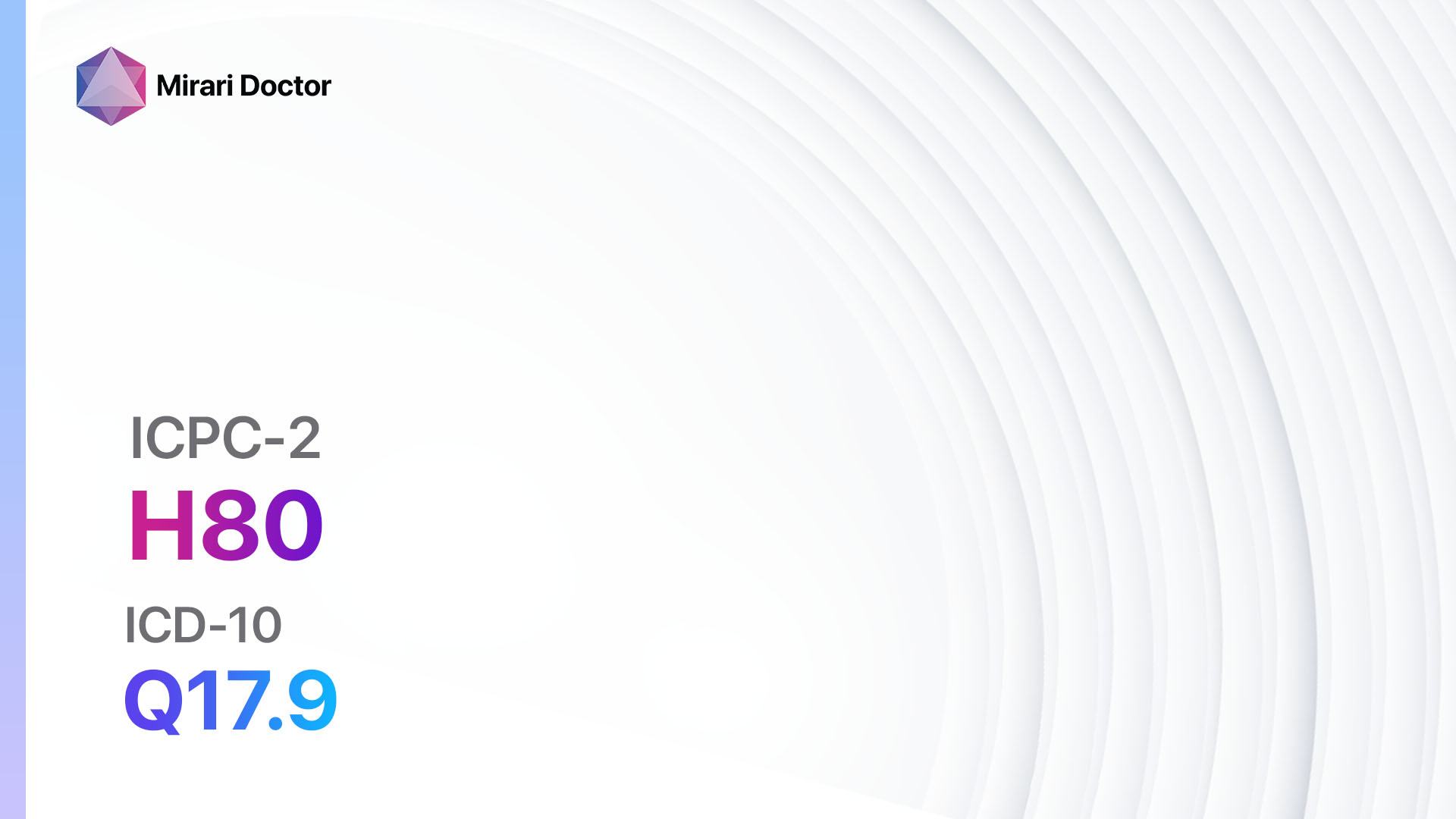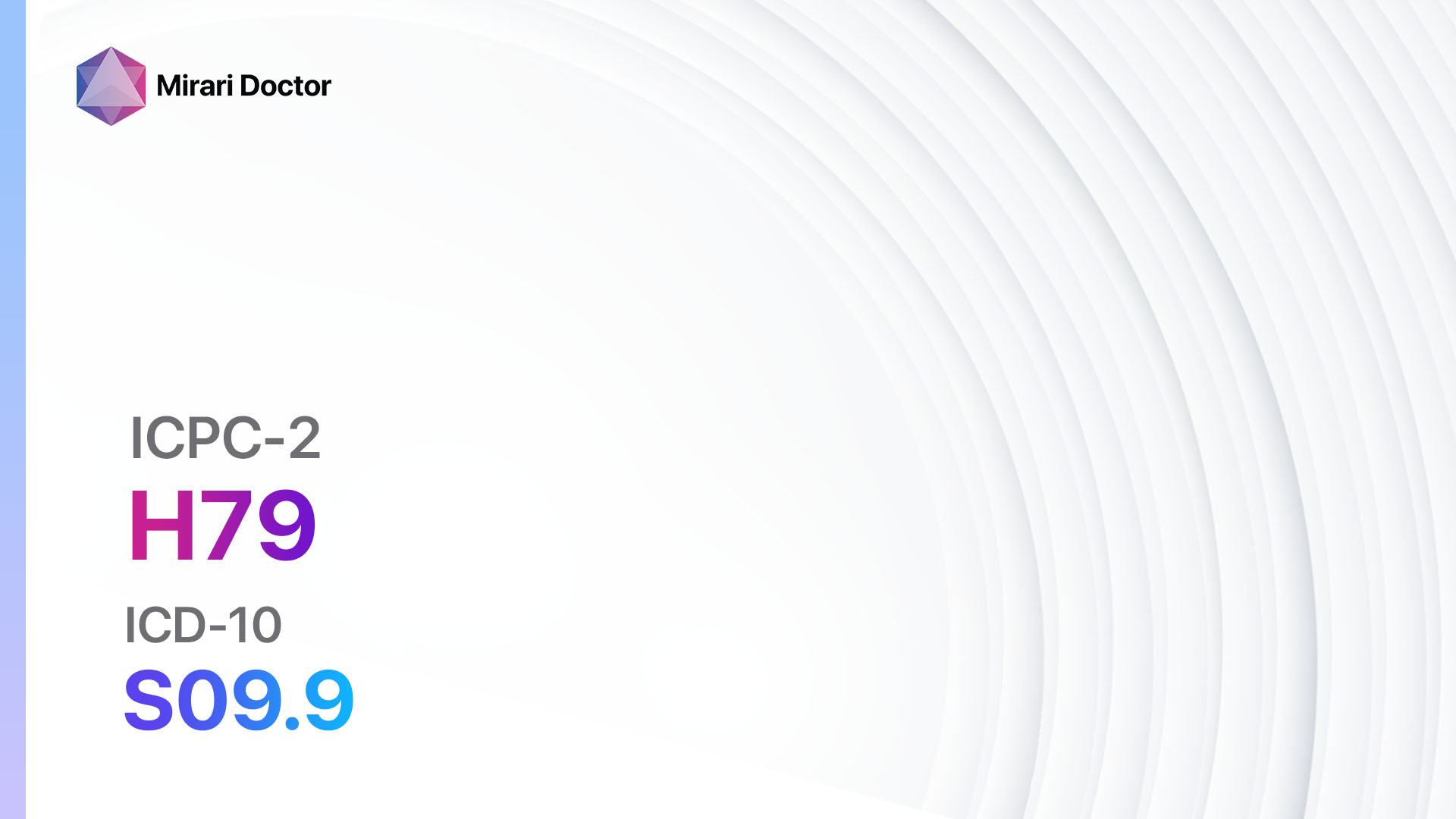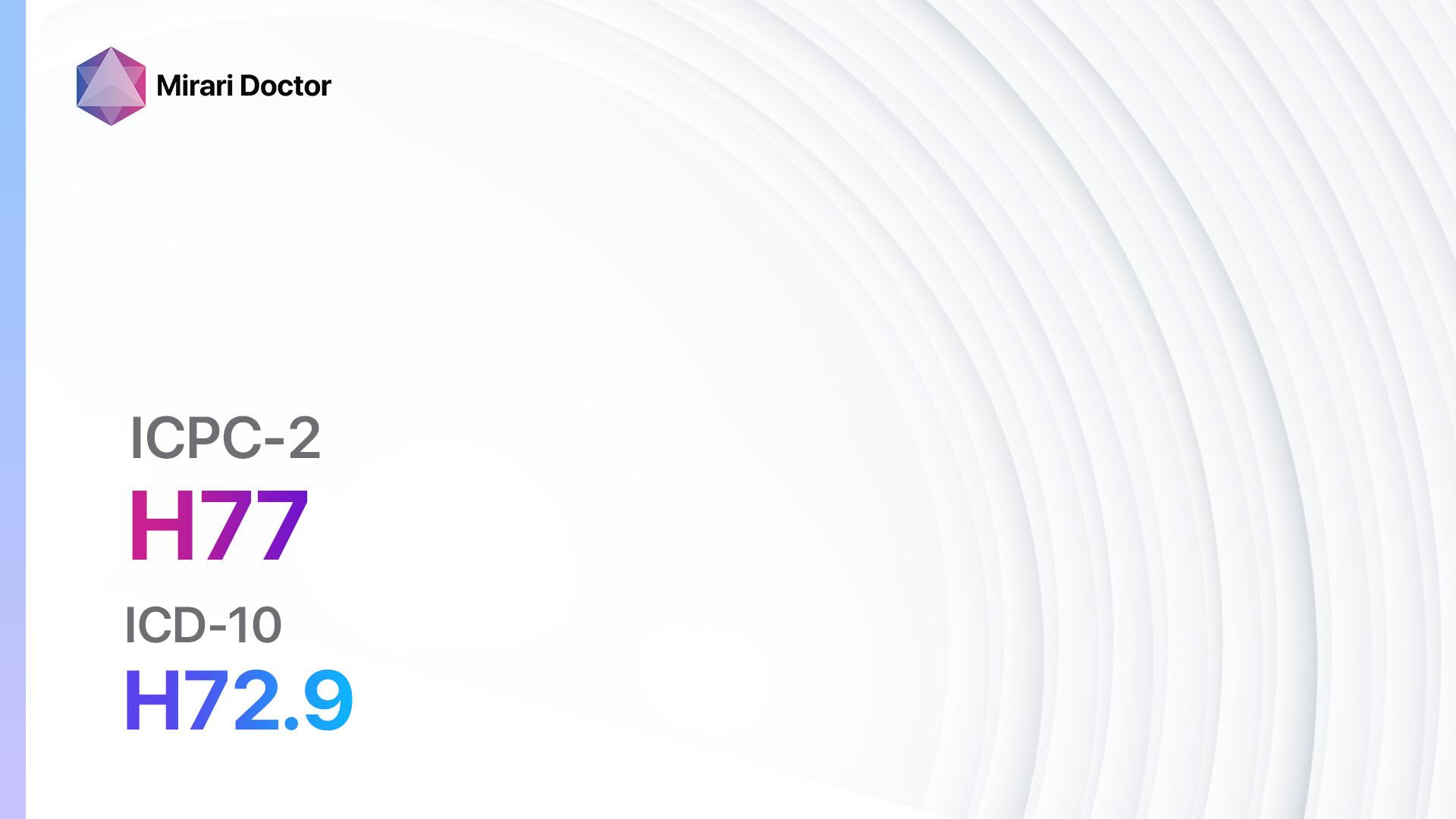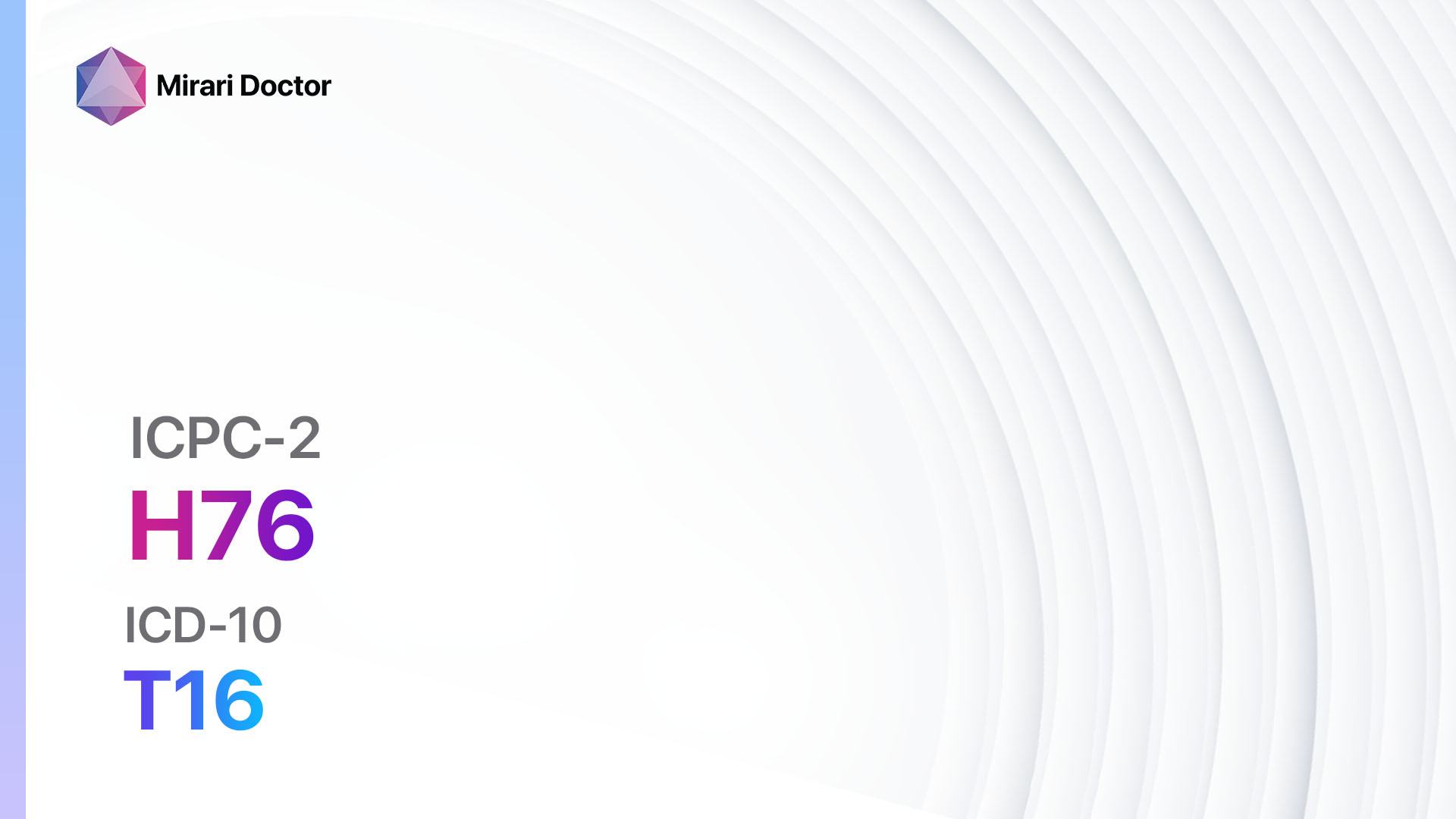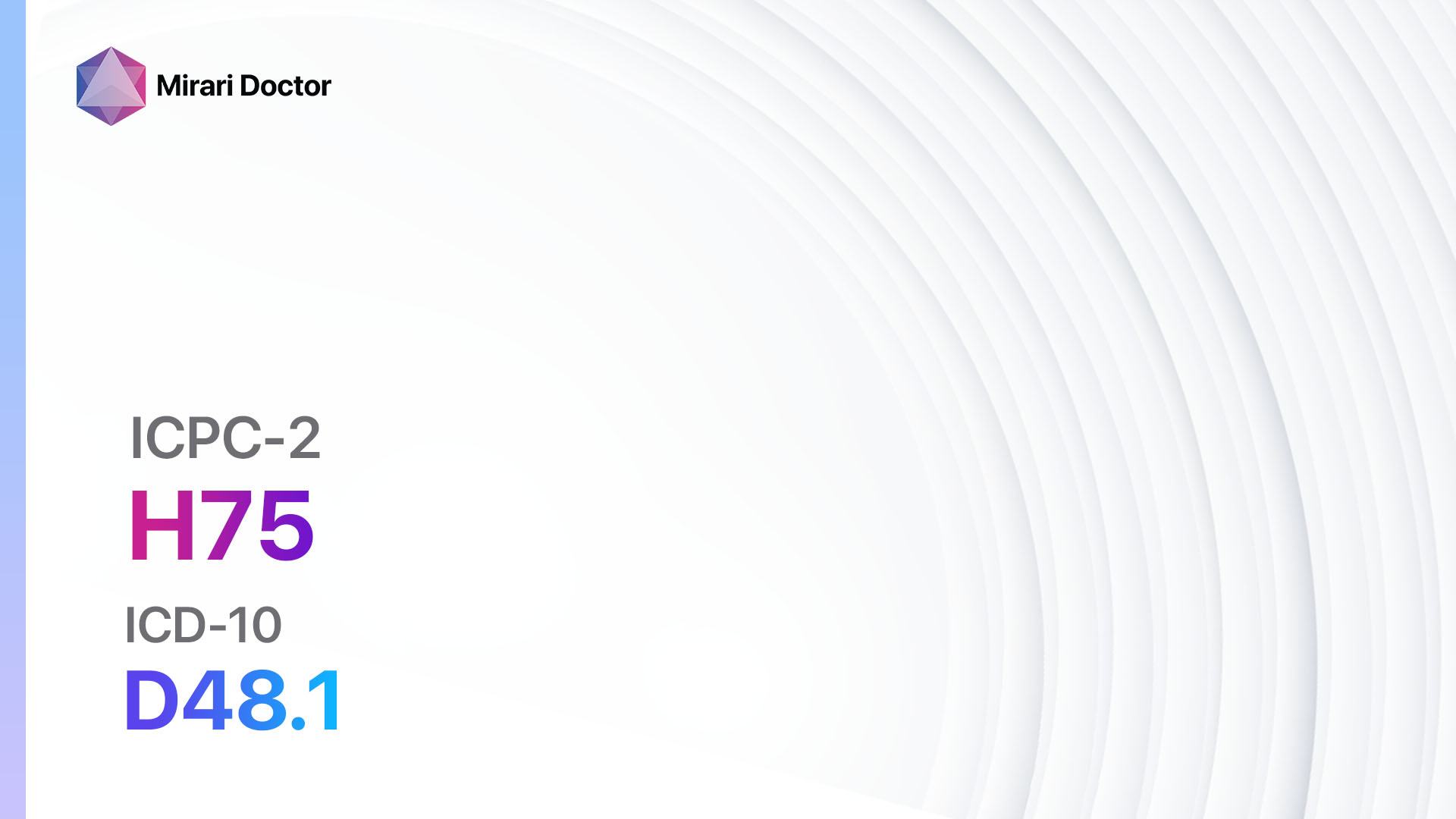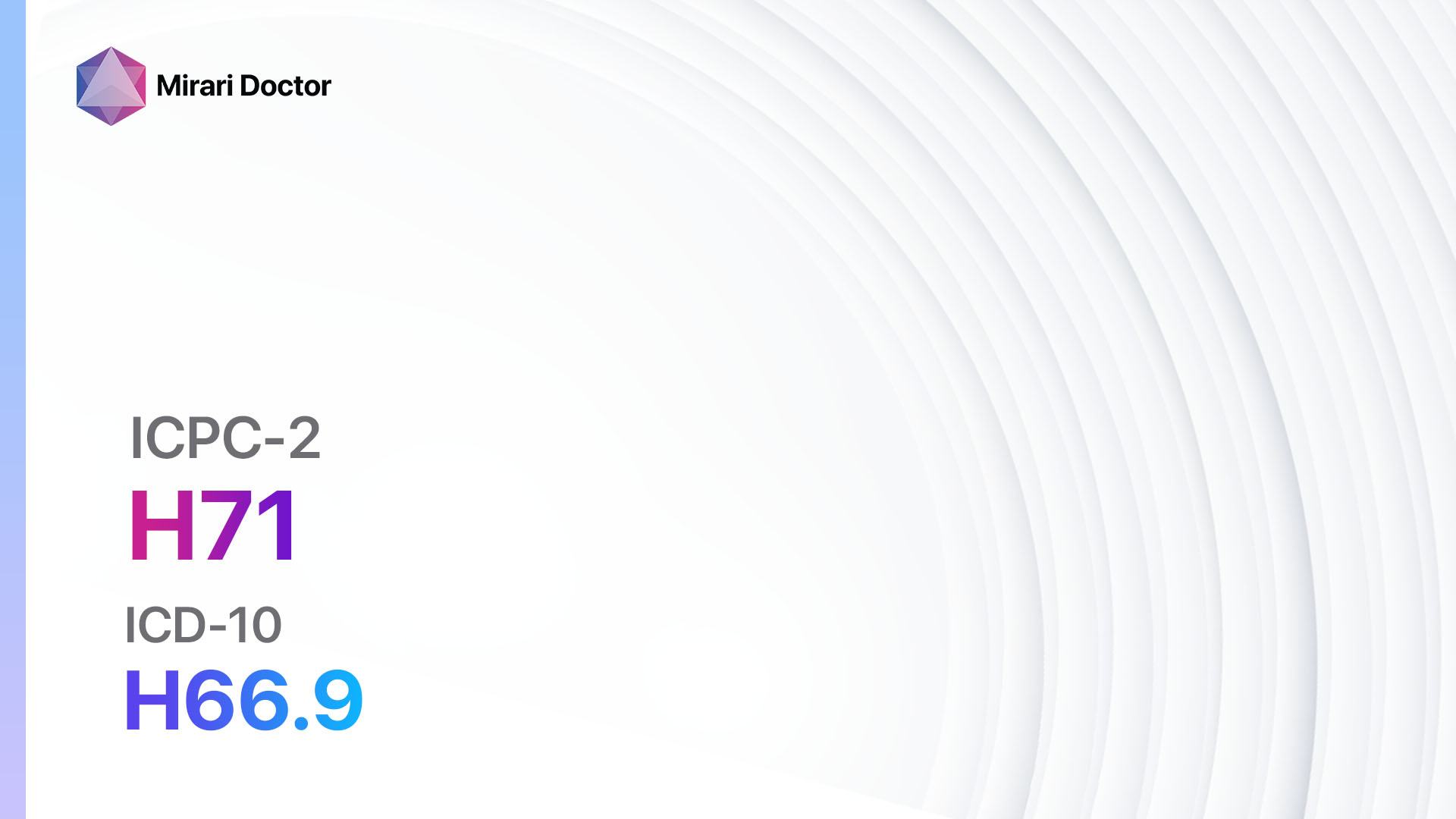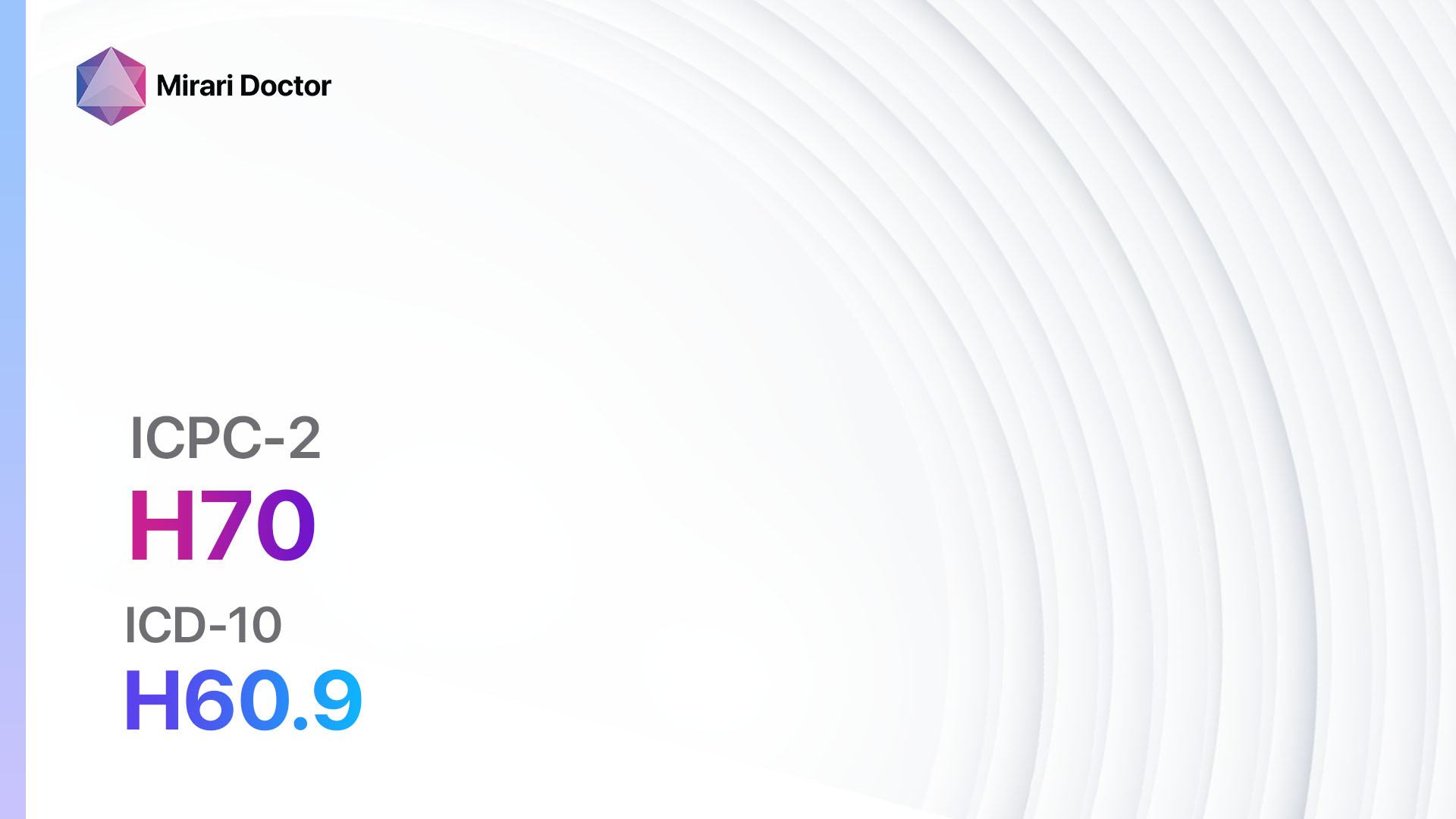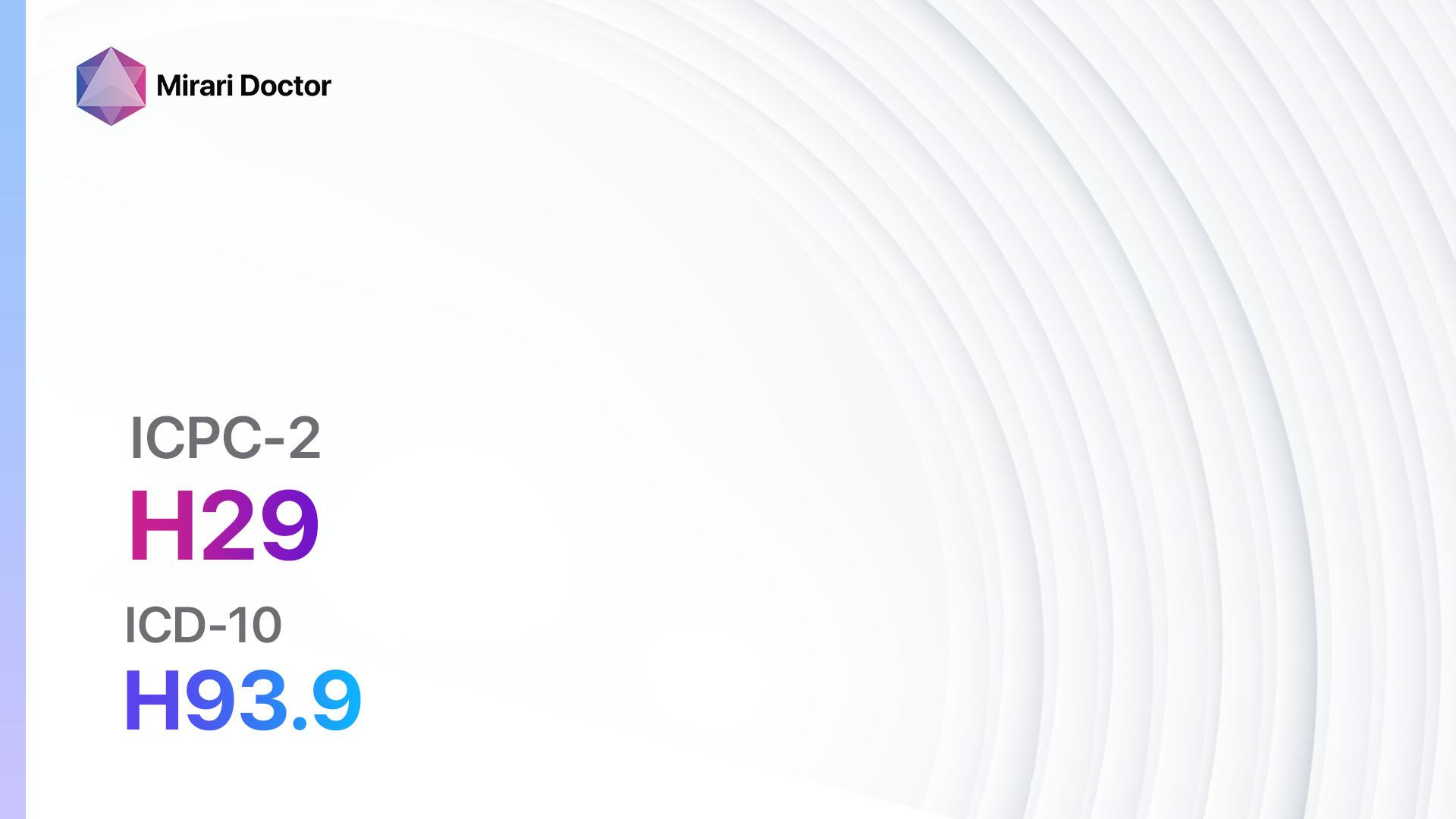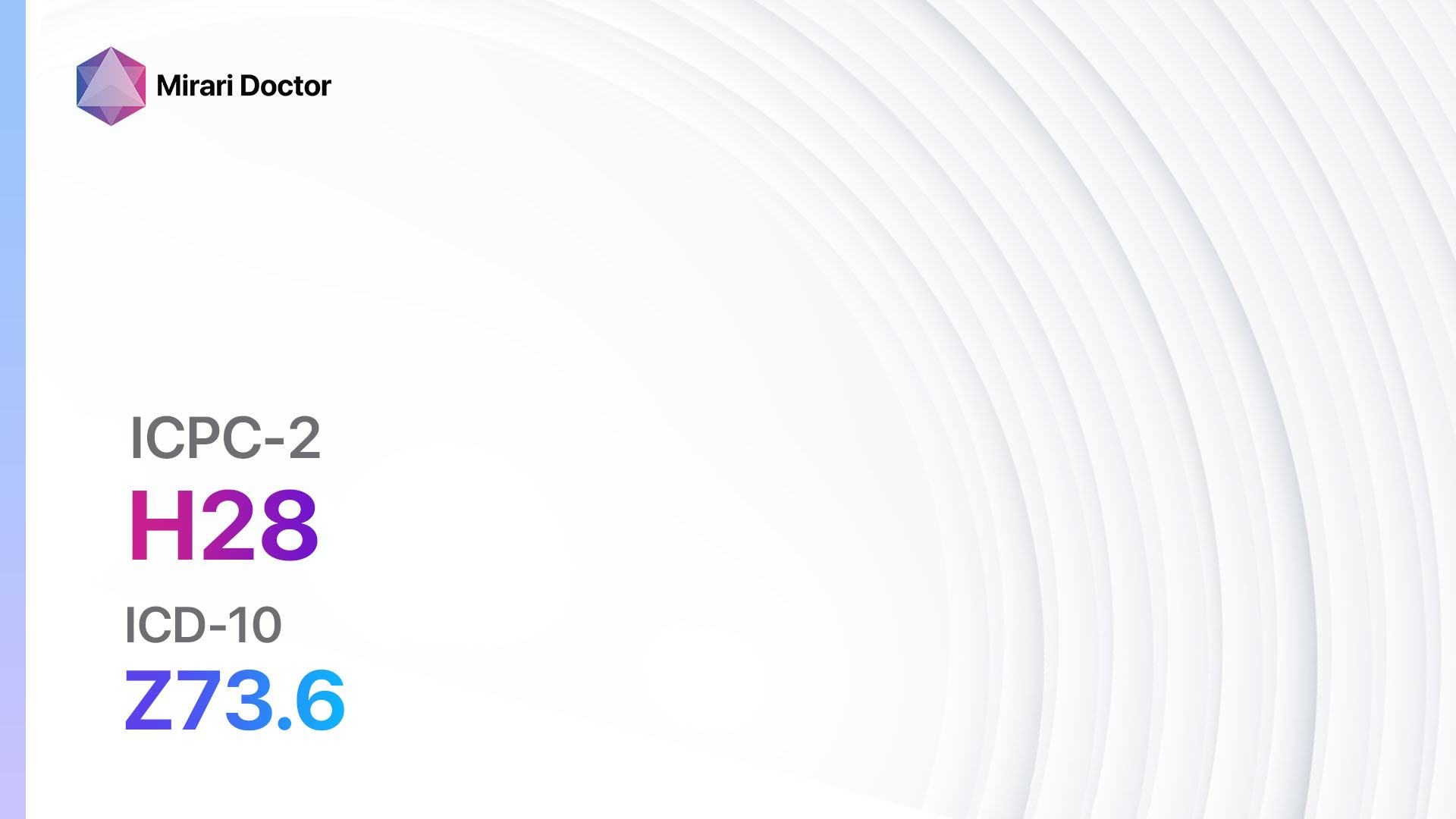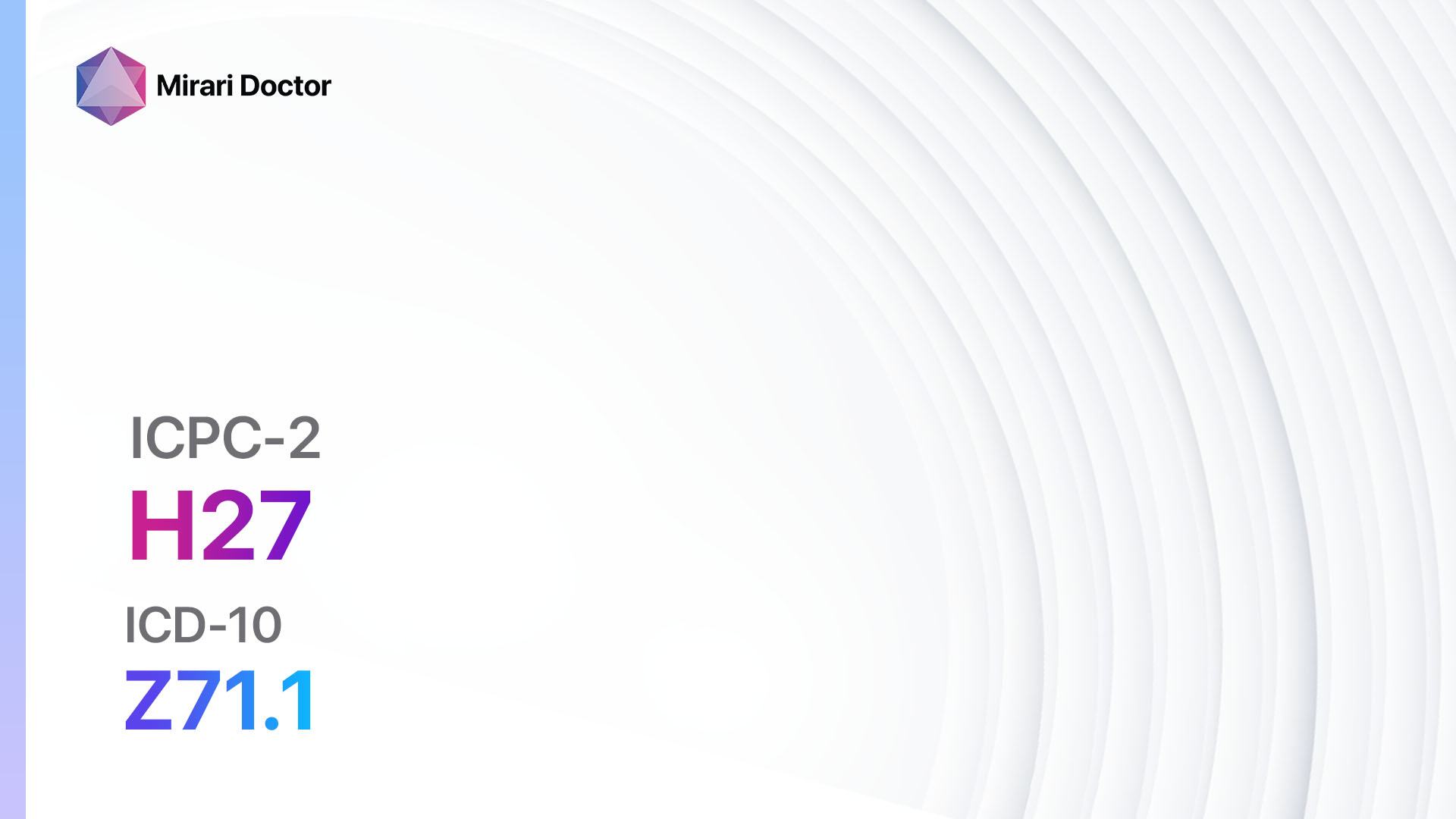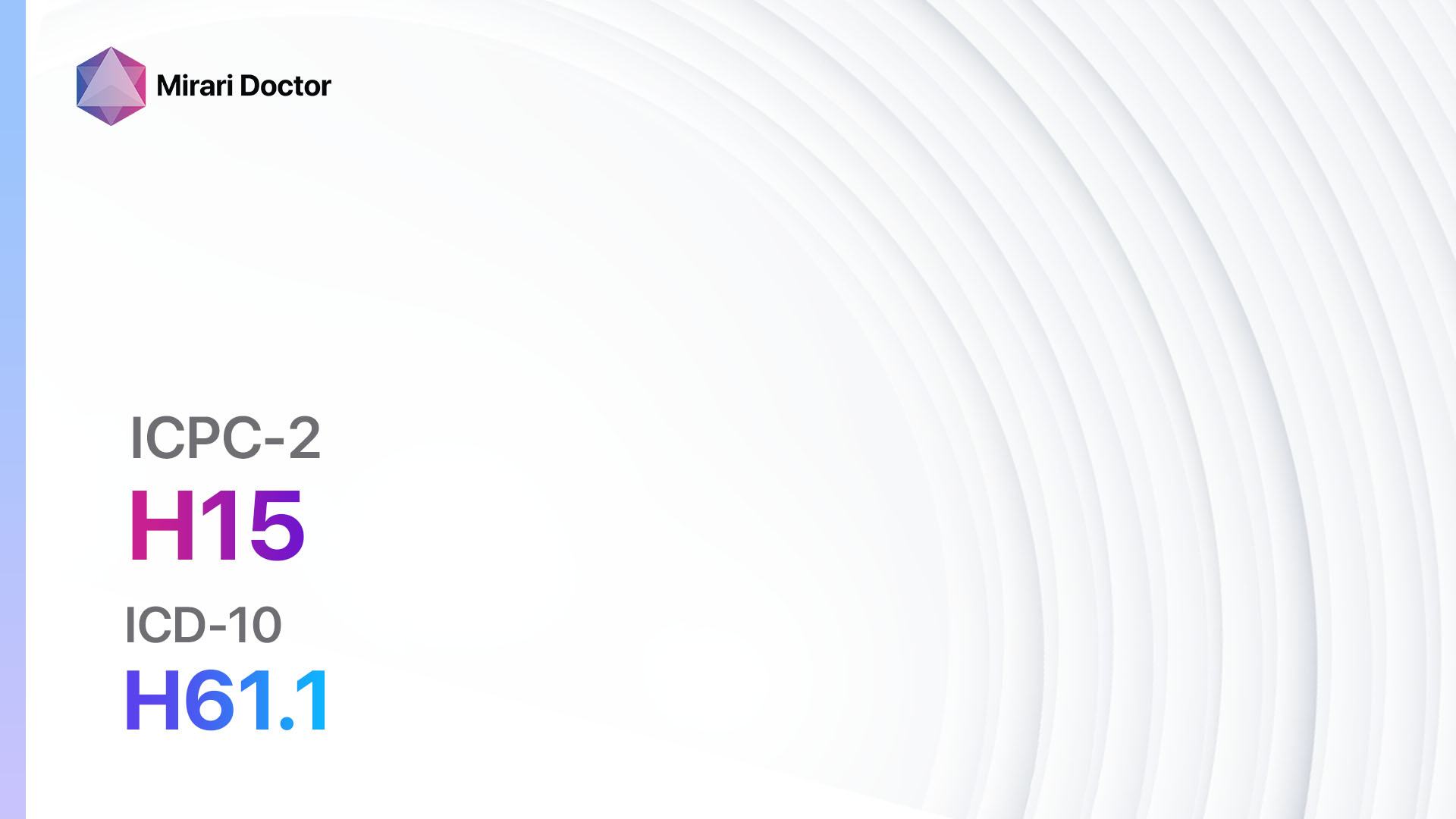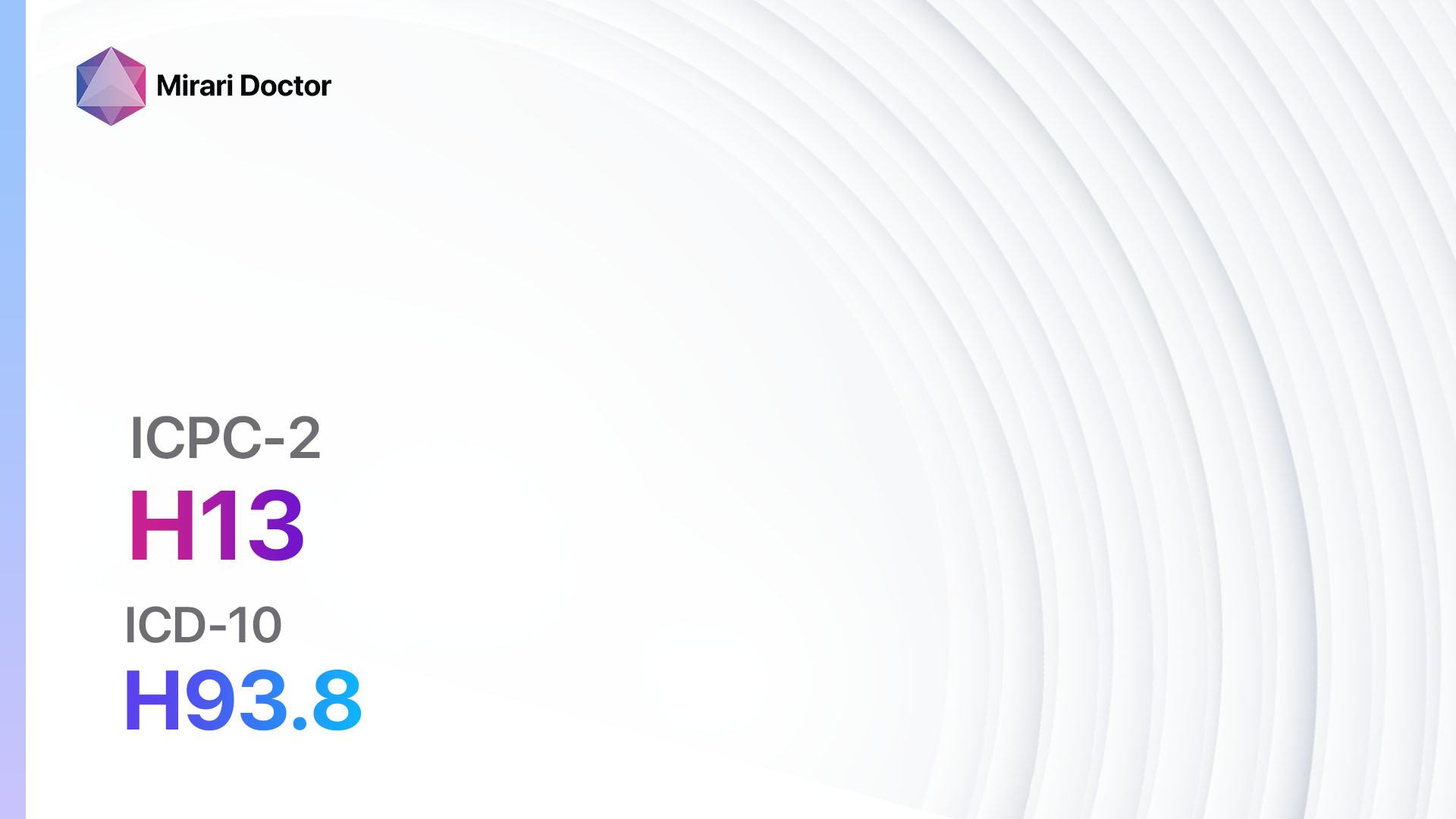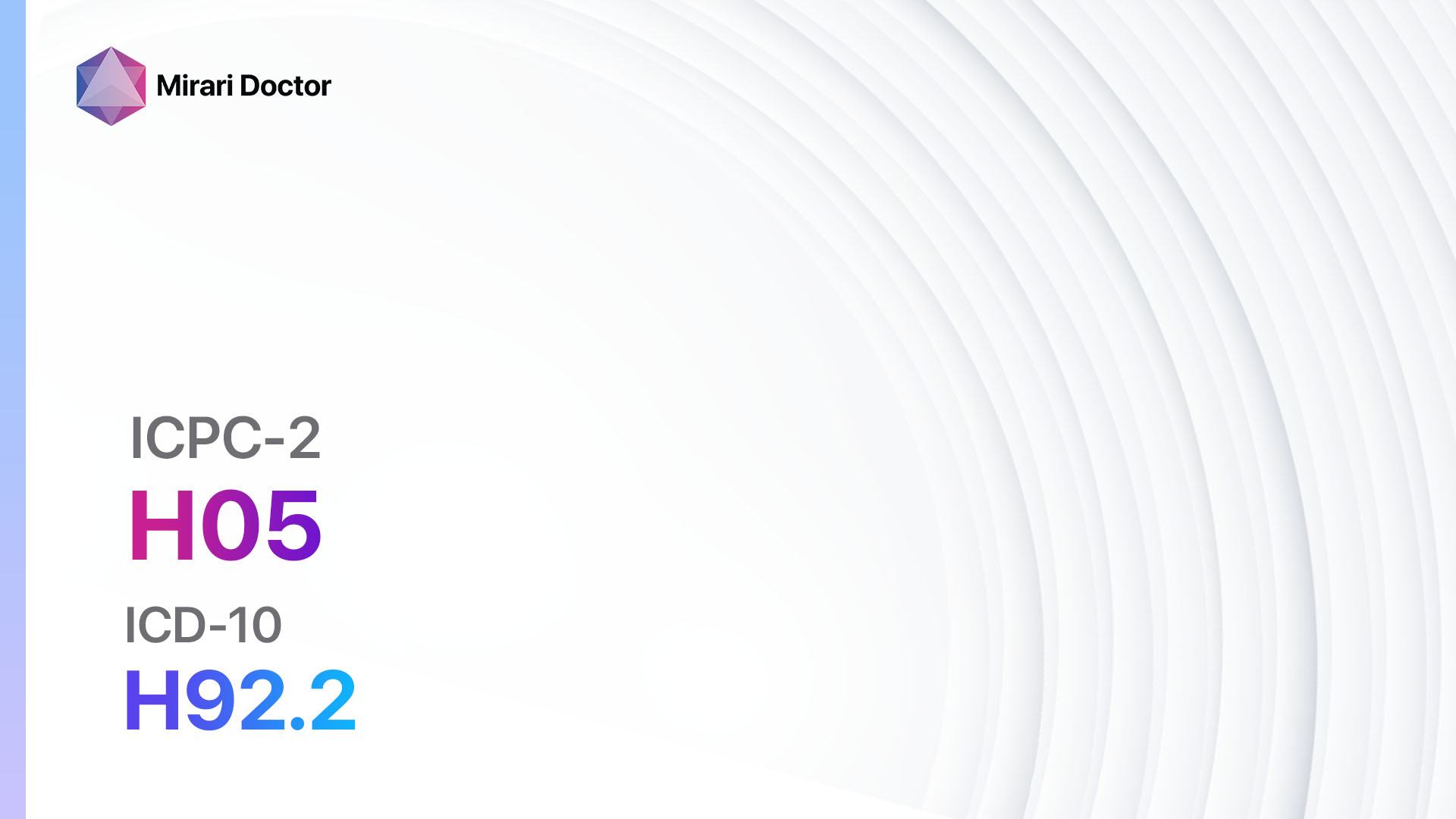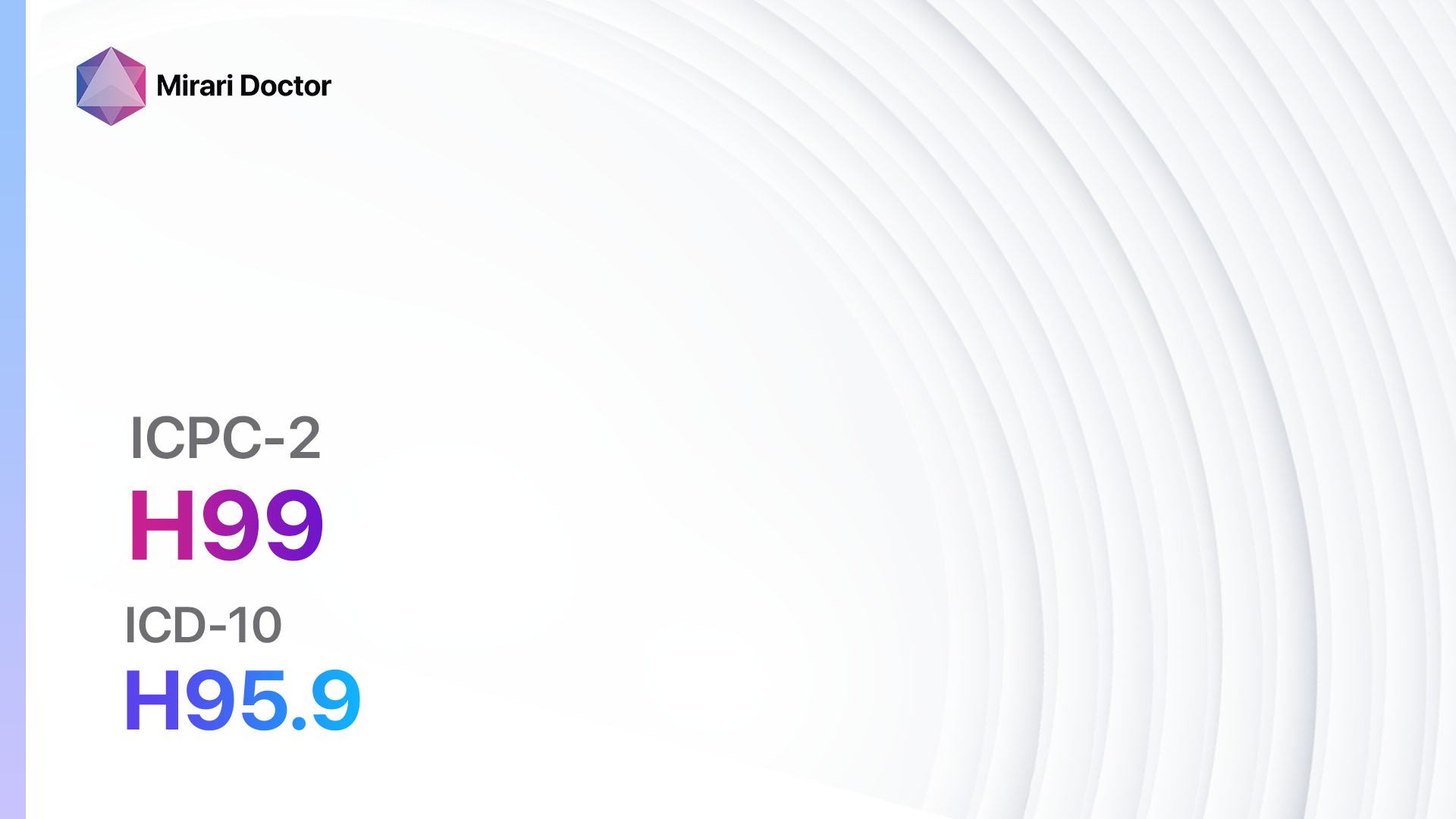
Introduction
Ear/mastoid disease refers to any condition affecting the ear or mastoid bone that is not classified under a specific diagnosis. This guide aims to provide a comprehensive overview of the symptoms, causes, diagnostic steps, possible interventions, and lifestyle interventions for ear/mastoid disease.
Codes
Symptoms
- Ear pain: Sharp or dull pain in the ear.[3]
- Hearing loss: Partial or complete loss of hearing.[4]
- Tinnitus: Ringing or buzzing sound in the ear.[5]
- Ear discharge: Fluid or pus draining from the ear.[6]
- Vertigo: Sensation of spinning or dizziness.[7]
- Facial weakness: Weakness or paralysis of the facial muscles.[8]
- Headache: Persistent or recurrent headaches.[9]
- Swelling or tenderness: Swelling or tenderness around the ear or mastoid area.[10]
Causes
- Infection: Bacterial or viral infections can cause ear/mastoid disease.
- Trauma: Injury to the ear or mastoid bone can lead to complications.
- Tumors: Benign or malignant tumors can affect the ear or mastoid area.
- Autoimmune disorders: Conditions like rheumatoid arthritis or lupus can cause ear/mastoid disease.
- Congenital abnormalities: Structural abnormalities present from birth can contribute to the development of ear/mastoid disease.
Diagnostic Steps
Medical History
- Gather information about the patient’s symptoms, including the duration and severity.
- Identify any risk factors, such as recent infections or exposure to loud noises.
- Inquire about any previous ear or mastoid-related conditions or surgeries.
- Assess the patient’s medical history, including any underlying medical conditions or medications that may contribute to the disease.
Physical Examination
- Inspect the external ear for any abnormalities, such as redness, swelling, or discharge.
- Examine the ear canal and eardrum using an otoscope to identify any signs of infection or damage.
- Assess facial nerve function by evaluating facial muscle strength and symmetry.
- Palpate the mastoid area for tenderness or swelling.
- Perform a hearing test to assess the patient’s hearing ability.
Laboratory Tests
- Complete blood count (CBC): To check for signs of infection or inflammation.
- C-reactive protein (CRP): Elevated levels may indicate inflammation.
- Erythrocyte sedimentation rate (ESR): Increased levels may suggest an inflammatory process.
- Viral or bacterial cultures: To identify the specific pathogen causing the infection.
- Autoimmune markers: Antinuclear antibody (ANA) test or rheumatoid factor (RF) test to assess for autoimmune disorders.
Diagnostic Imaging
- X-ray: To evaluate the bony structures of the ear and mastoid area.
- CT scan: Provides detailed images of the ear and mastoid bones, useful for assessing tumors or structural abnormalities.
- MRI: Offers a more detailed view of soft tissues, helpful for identifying tumors or nerve-related issues.
- Ultrasound: Can be used to assess blood flow or detect fluid accumulation in the ear.
Other Tests
- Audiometry: Measures the patient’s hearing ability and identifies the type and degree of hearing loss.
- Electronystagmography (ENG): Evaluates the function of the inner ear and helps diagnose balance disorders.
- Tympanometry: Assesses the movement of the eardrum and middle ear function.
- Mastoidectomy: Surgical removal of infected mastoid air cells to treat chronic mastoiditis.
Follow-up and Patient Education
- Schedule follow-up appointments to monitor the patient’s progress and response to treatment.
- Provide education on proper ear hygiene and infection prevention measures.
- Discuss the importance of regular check-ups and hearing tests for early detection of any recurrence or complications.
Possible Interventions
Traditional Interventions
Medications:
Top 5 drugs for Ear/mastoid disease, other:
- Antibiotics (e.g., Amoxicillin, Ciprofloxacin):
- Cost: Generic versions can be $3-$50/month.
- Contraindications: Allergy to antibiotics, certain medical conditions.
- Side effects: Nausea, diarrhea, allergic reactions.
- Severe side effects: Severe allergic reactions, tendon rupture.
- Drug interactions: Certain medications may interfere with antibiotic effectiveness.
- Warning: Finish the full course of antibiotics as prescribed.
- Corticosteroids (e.g., Prednisone, Dexamethasone):
- Cost: Generic versions can be $4-$50/month.
- Contraindications: Active infections, certain medical conditions.
- Side effects: Increased appetite, weight gain, mood changes.
- Severe side effects: Increased risk of infections, adrenal suppression.
- Drug interactions: Certain medications may interact with corticosteroids.
- Warning: Taper off corticosteroids gradually to avoid withdrawal symptoms.
- Analgesics (e.g., Acetaminophen, Ibuprofen):
- Cost: Over-the-counter options are available at a low cost.
- Contraindications: Allergy to analgesics, certain medical conditions.
- Side effects: Upset stomach, liver damage (with excessive use).
- Severe side effects: Allergic reactions, gastrointestinal bleeding (with prolonged use).
- Drug interactions: Certain medications may interact with analgesics.
- Warning: Follow the recommended dosage and avoid exceeding the maximum daily limit.
- Antiviral medications (e.g., Acyclovir, Valacyclovir):
- Cost: Generic versions can be $10-$100/month.
- Contraindications: Allergy to antiviral medications, certain medical conditions.
- Side effects: Nausea, headache, dizziness.
- Severe side effects: Severe allergic reactions, kidney damage.
- Drug interactions: Certain medications may interact with antiviral medications.
- Warning: Start antiviral treatment as early as possible for maximum effectiveness.
- Antihistamines (e.g., Loratadine, Cetirizine):
- Cost: Generic versions can be $5-$30/month.
- Contraindications: Allergy to antihistamines, certain medical conditions.
- Side effects: Drowsiness, dry mouth, blurred vision.
- Severe side effects: Severe allergic reactions, difficulty urinating.
- Drug interactions: Certain medications may interact with antihistamines.
- Warning: Avoid driving or operating machinery if experiencing drowsiness.
Alternative Drugs:
- Decongestants (e.g., Pseudoephedrine): Helps relieve nasal congestion and pressure.
- Antifungal medications (e.g., Clotrimazole, Fluconazole): Treats fungal infections in the ear.
- Antibacterial ear drops (e.g., Ciprofloxacin, Ofloxacin): Used to treat localized ear infections.
- Antivertigo medications (e.g., Meclizine, Betahistine): Helps alleviate vertigo symptoms.
- Mastoid bone cement: Used in reconstructive surgery for mastoid bone defects.
Surgical Procedures:
- Myringotomy: A small incision is made in the eardrum to drain fluid or relieve pressure.
- Cost: $2,000 to $5,000.
- Tympanoplasty: Surgical repair of the eardrum or middle ear structures.
- Cost: $5,000 to $15,000.
- Mastoidectomy: Removal of infected mastoid air cells to treat chronic mastoiditis.
- Cost: $10,000 to $30,000.
- Stapedectomy: Surgical replacement of the stapes bone to improve hearing.
- Cost: $15,000 to $40,000.
- Cochlear implant: Surgically implanted device to improve hearing in severe cases of hearing loss.
- Cost: $50,000 to $100,000.
Alternative Interventions
- Acupuncture: May help alleviate pain and promote overall well-being.
- Cost: $60-$120 per session.
- Herbal remedies: Certain herbs, such as mullein or garlic oil, may provide relief from ear-related symptoms.
- Cost: Varies depending on the specific herb or remedy.
- Homeopathic treatments: Some homeopathic remedies, such as Chamomilla or Pulsatilla, may help with ear-related symptoms.
- Cost: Varies depending on the specific remedy.
- Chiropractic care: Manipulative techniques may help improve the function of the ear and relieve symptoms.
- Cost: $50-$150 per session.
- Probiotics: Certain strains of probiotics may help boost the immune system and prevent ear infections.
- Cost: Varies depending on the specific probiotic supplement.
Lifestyle Interventions
- Ear hygiene: Proper cleaning and maintenance of the ears to prevent infections.
- Avoiding loud noises: Protecting the ears from excessive noise exposure.
- Smoking cessation: Quitting smoking to reduce the risk of ear-related complications.
- Stress management: Stress reduction techniques, such as meditation or yoga, to promote overall well-being.
- Healthy diet: Consuming a balanced diet rich in vitamins and minerals to support ear health.
It is important to note that the cost ranges provided are approximate and may vary depending on the location and availability of the interventions.
Mirari Cold Plasma Alternative Intervention
Understanding Mirari Cold Plasma
- Safe and Non-Invasive Treatment: Mirari Cold Plasma is a safe and non-invasive treatment option for various skin conditions. It does not require incisions, minimizing the risk of scarring, bleeding, or tissue damage.
- Efficient Extraction of Foreign Bodies: Mirari Cold Plasma facilitates the removal of foreign bodies from the skin by degrading and dissociating organic matter, allowing easier access and extraction.
- Pain Reduction and Comfort: Mirari Cold Plasma has a local analgesic effect, providing pain relief during the treatment, making it more comfortable for the patient.
- Reduced Risk of Infection: Mirari Cold Plasma has antimicrobial properties, effectively killing bacteria and reducing the risk of infection.
- Accelerated Healing and Minimal Scarring: Mirari Cold Plasma stimulates wound healing and tissue regeneration, reducing healing time and minimizing the formation of scars.
Mirari Cold Plasma Prescription
Video instructions for using Mirari Cold Plasma Device – H99 Ear/mastoid disease, other (ICD-10:H95.9)
| Mild | Moderate | Severe |
| Mode setting: 1 (Infection) Location: 0 (Localized) Morning: 15 minutes, Evening: 15 minutes |
Mode setting: 1 (Infection) Location: 0 (Localized) Morning: 30 minutes, Lunch: 30 minutes, Evening: 30 minutes |
Mode setting: 1 (Infection) Location: 0 (Localized) Morning: 30 minutes, Lunch: 30 minutes, Evening: 30 minutes |
| Mode setting: 2 (Wound Healing) Location: 0 (Localized) Morning: 15 minutes, Evening: 15 minutes |
Mode setting: 2 (Wound Healing) Location: 0 (Localized) Morning: 30 minutes, Lunch: 30 minutes, Evening: 30 minutes |
Mode setting: 2 (Wound Healing) Location: 0 (Localized) Morning: 30 minutes, Lunch: 30 minutes, Evening: 30 minutes |
| Mode setting: 3 (Antiviral Therapy) Location: 0 (Localized) Morning: 15 minutes, Evening: 15 minutes |
Mode setting: 3 (Antiviral Therapy) Location: 0 (Localized) Morning: 30 minutes, Lunch: 30 minutes, Evening: 30 minutes |
Mode setting: 3 (Antiviral Therapy) Location: 0 (Localized) Morning: 30 minutes, Lunch: 30 minutes, Evening: 30 minutes |
| Total Morning: 45 minutes approx. $7.50 USD, Evening: 45 minutes approx. $7.50 USD |
Total Morning: 90 minutes approx. $15 USD, Lunch: 90 minutes approx. $15 USD, Evening: 90 minutes approx. $15 USD, |
Total Morning: 90 minutes approx. $15 USD, Lunch: 90 minutes approx. $15 USD, Evening: 90 minutes approx. $15 USD, |
| Usual treatment for 7-60 days approx. $105 USD – $900 USD | Usual treatment for 6-8 weeks approx. $1,890 USD – $2,520 USD |
Usual treatment for 3-6 months approx. $4,050 USD – $8,100 USD
|
 |
|
Use the Mirari Cold Plasma device to treat Ear/mastoid disease, other effectively.
WARNING: MIRARI COLD PLASMA IS DESIGNED FOR THE HUMAN BODY WITHOUT ANY ARTIFICIAL OR THIRD PARTY PRODUCTS. USE OF OTHER PRODUCTS IN COMBINATION WITH MIRARI COLD PLASMA MAY CAUSE UNPREDICTABLE EFFECTS, HARM OR INJURY. PLEASE CONSULT A MEDICAL PROFESSIONAL BEFORE COMBINING ANY OTHER PRODUCTS WITH USE OF MIRARI.
Step 1: Cleanse the Skin
- Start by cleaning the affected area of the skin with a gentle cleanser or mild soap and water. Gently pat the area dry with a clean towel.
Step 2: Prepare the Mirari Cold Plasma device
- Ensure that the Mirari Cold Plasma device is fully charged or has fresh batteries as per the manufacturer’s instructions. Make sure the device is clean and in good working condition.
- Switch on the Mirari device using the power button or by following the specific instructions provided with the device.
- Some Mirari devices may have adjustable settings for intensity or treatment duration. Follow the manufacturer’s instructions to select the appropriate settings based on your needs and the recommended guidelines.
Step 3: Apply the Device
- Place the Mirari device in direct contact with the affected area of the skin. Gently glide or hold the device over the skin surface, ensuring even coverage of the area experiencing.
- Slowly move the Mirari device in a circular motion or follow a specific pattern as indicated in the user manual. This helps ensure thorough treatment coverage.
Step 4: Monitor and Assess:
- Keep track of your progress and evaluate the effectiveness of the Mirari device in managing your Ear/mastoid disease, other. If you have any concerns or notice any adverse reactions, consult with your health care professional.
Note
This guide is for informational purposes only and should not replace the advice of a medical professional. Always consult with your healthcare provider or a qualified medical professional for personal advice, diagnosis, or treatment. Do not solely rely on the information presented here for decisions about your health. Use of this information is at your own risk. The authors of this guide, nor any associated entities or platforms, are not responsible for any potential adverse effects or outcomes based on the content.
Mirari Cold Plasma System Disclaimer
- Purpose: The Mirari Cold Plasma System is a Class 2 medical device designed for use by trained healthcare professionals. It is registered for use in Thailand and Vietnam. It is not intended for use outside of these locations.
- Informational Use: The content and information provided with the device are for educational and informational purposes only. They are not a substitute for professional medical advice or care.
- Variable Outcomes: While the device is approved for specific uses, individual outcomes can differ. We do not assert or guarantee specific medical outcomes.
- Consultation: Prior to utilizing the device or making decisions based on its content, it is essential to consult with a Certified Mirari Tele-Therapist and your medical healthcare provider regarding specific protocols.
- Liability: By using this device, users are acknowledging and accepting all potential risks. Neither the manufacturer nor the distributor will be held accountable for any adverse reactions, injuries, or damages stemming from its use.
- Geographical Availability: This device has received approval for designated purposes by the Thai and Vietnam FDA. As of now, outside of Thailand and Vietnam, the Mirari Cold Plasma System is not available for purchase or use.
References
- PH3C. (n.d.). ICPC-1 mapping ICPC-2.xlsx. Retrieved from http://www.ph3c.org/PH3C/docs/27/000460/0000852.pdf
- ICD10data.com. (2024). 2024 ICD-10-CM Diagnosis Code H95.89. Retrieved from https://www.icd10data.com/ICD10CM/Codes/H60-H95/H95-H95/H95-/H95.89
- MedicineNet. (n.d.). Mastoiditis Causes, Symptoms, Treatment Guidelines & Surgery. Retrieved from https://www.medicinenet.com/mastoiditis/article.htm
- Telatin, M., & Irvine, D. S. (2022). The Development of Bilateral Mastoiditis Following Acute Otitis Media in a Pediatric Patient with Limited Access to Health Care. Cureus, 14(1), e21305. https://doi.org/10.7759/cureus.21305
- Medscape. (n.d.). Mastoiditis Workup: Approach Considerations, Imaging Studies. Retrieved from https://emedicine.medscape.com/article/2056657-workup
- Boston Children’s Hospital. (n.d.). Mastoiditis | Boston Children’s Hospital. Retrieved from https://www.childrenshospital.org/conditions/mastoiditis
- Little, CJ ; Lane, JG ; Pearson, GR (1991). Inflammatory middle ear disease of the dog: the pathology of otitis media. DOI: 10.1136/vr.128.13.293
- DAGAN, RON (2000). Clinical significance of resistant organisms in otitis media. DOI: 10.1097/00006454-200004000-00033
- BLUESTONE, C. D (1998). Role of surgery for otitis media in the era of resistant bacteria. DOI: 10.1097/00006454-199811000-00040
- Lee, Michael Robert ; Pawlowski, Karen Sue ; Luong, Amber ; Furze, Alexis Dorian ; Roland, Peter Sargent (2009). Biofilm presence in humans with chronic suppurative otitis media. DOI: 10.1016/j.otohns.2009.08.010
Related articles
Made in USA


